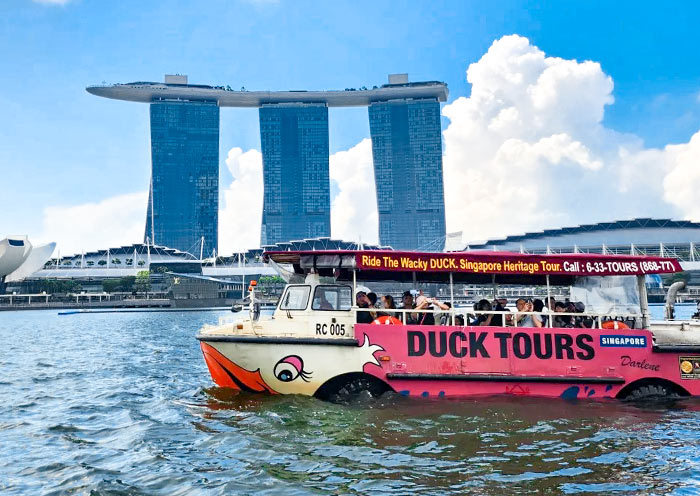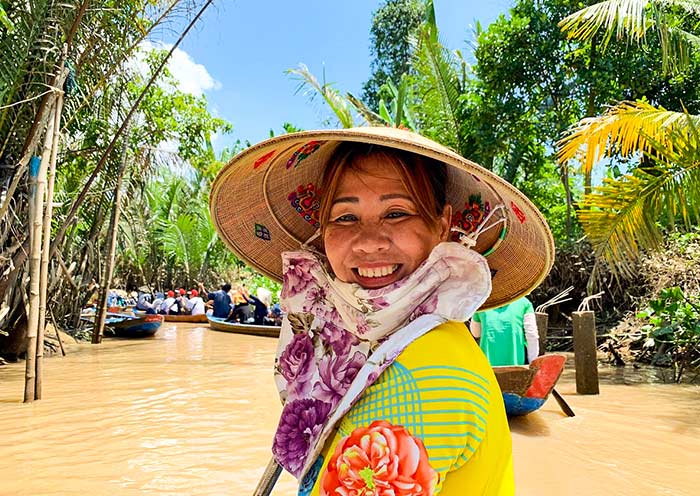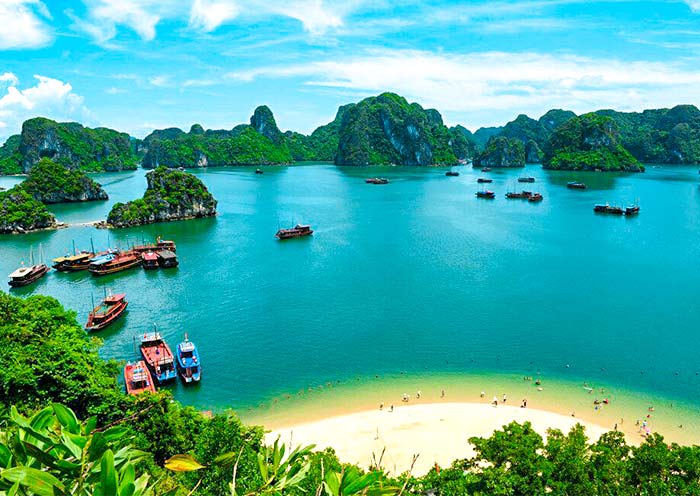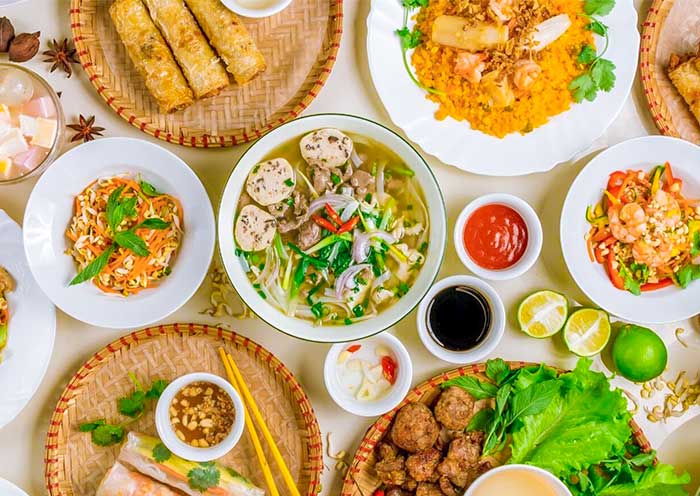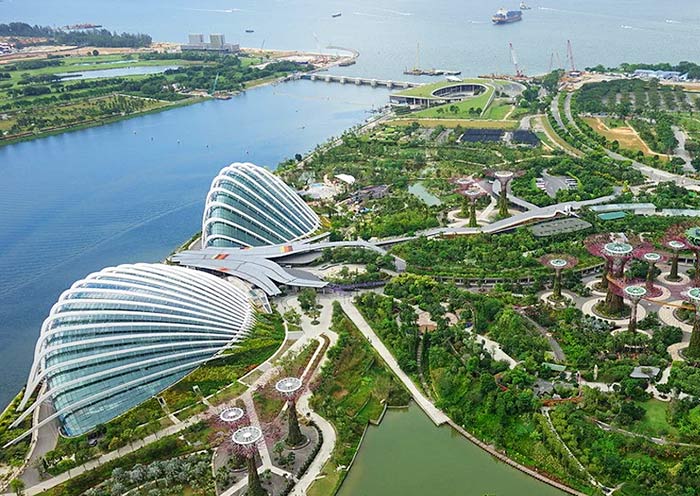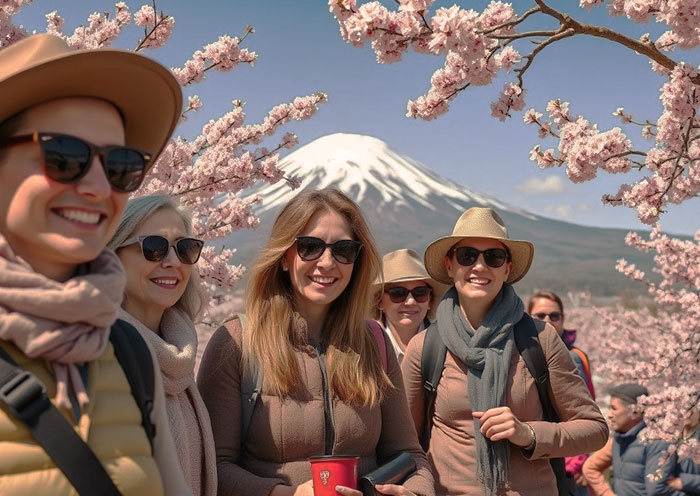We traveled with 7 lady friends. Our trip with Asia Odyssey Travel was so well planned, and seamless. Our time in Bhutan was exceptional, being led by Ugyan and Doji. What two very wonderful men. They were both so very knowledgeable, kind, and helpful. I cannot say enough good about our time in Bhutan with these two good men,...our guide and driver. Thank you Asia OdysseyTravel!!! p.s. Our trip was planned by Tony of Asia Odyssey. He was amazingly helpful, and planned our trip flawlessly! Thank you, Tony!
10 Days Singapore Vietnam Tour Package - Garden City to Halong Bay
- Highlights
- Itinerary
- Price
- Trip Notes
- Accommodation
- Photos
- Reviews
Singapore Vietnam Tour: From Singapore's Skyline to Vietnam's Shores
Start your Southeast Asia Adventure with our 10 Days Singapore Vietnam Tour, taking you from Garden City to Halong Bay’s emerald waters and beyond.
Start your journey in Singapore, the Garden City, exploring highlights like Kampong Glam, Merlion Park, and the UNESCO-listed Botanic Gardens. Enjoy your time in Singapore's Modern Marvels & Rich Nightlife.
Fly to Vietnam and immerse yourself in Hanoi’s rich heritage with visits to the Ho Chi Minh Mausoleum, One Pillar Pagoda, and the bustling Old Quarter. Cruise through the breathtaking Halong Bay, a UNESCO World Heritage site, before heading to Hoi An, where you’ll enjoy a basketboat ride and stroll through the charming Ancient Town. Conclude your adventure in Ho Chi Minh City, discovering the historic Cu Chi Tunnels, vibrant markets, and the lush Mekong Delta.
Our 10 Days Singapore Vietnam Tour blends cityscapes, cultural wonders, and natural beauty. From Singapore’s Skyline to Vietnam’s Rural Charm Shores, this tour promises a once-in-a-lifetime experience in Southeast Asia.
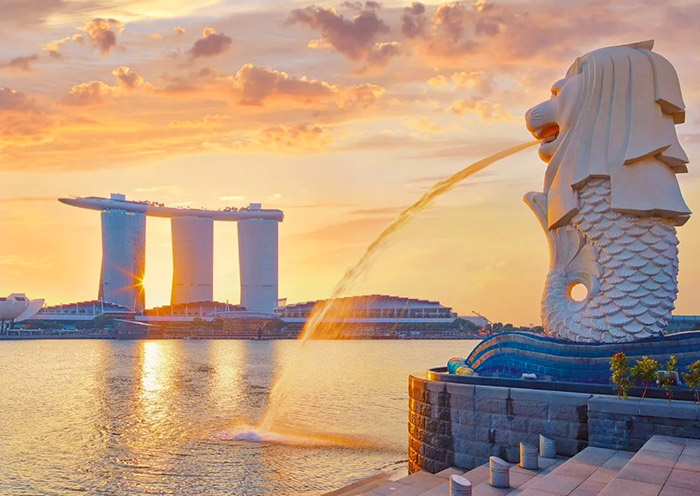
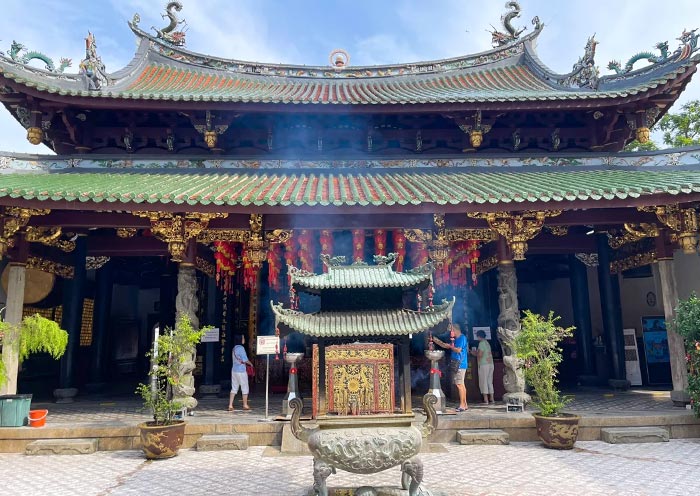

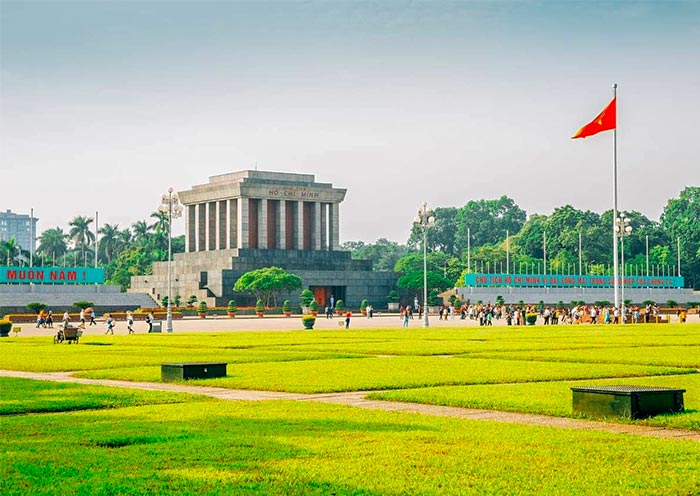
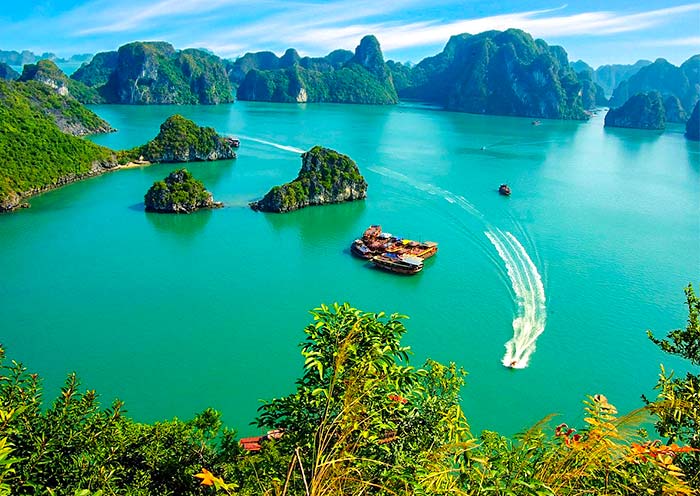
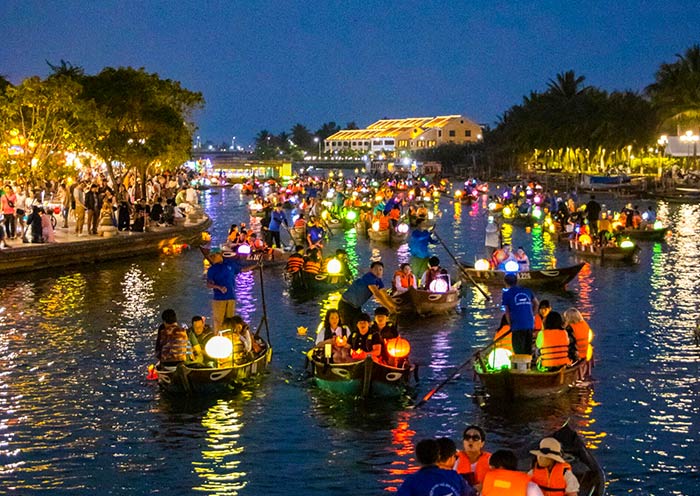
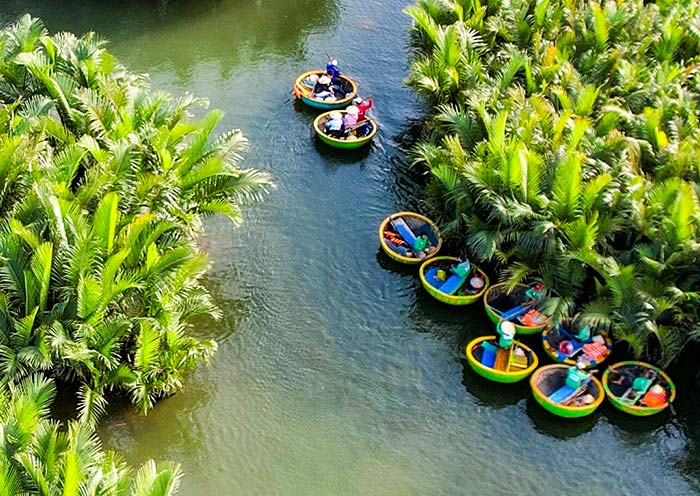

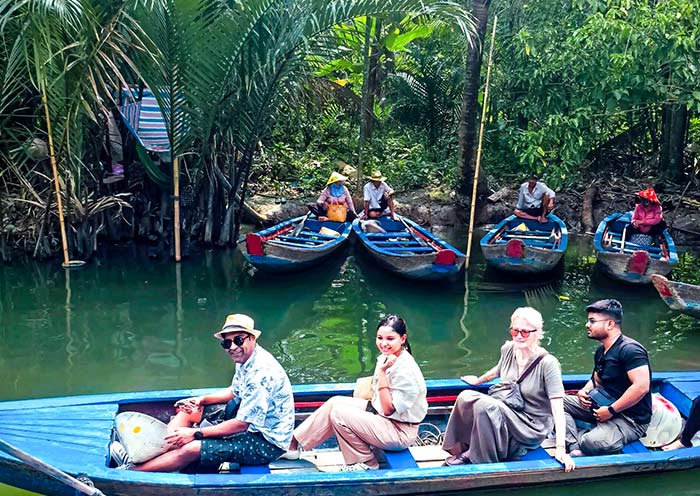
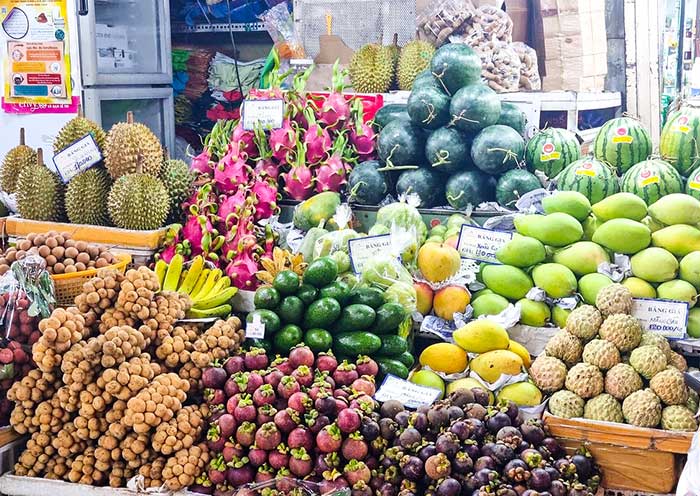
Itinerary at a Glance
Singapore (2 Days)
Kampong Glam, Merlion Park, Thian Hock Keng Temple, Singapore Botanic Gardens (World Heritage; National Orchid Garden)
Hanoi, Vietnam (2 Days)
Tran Quoc Pagoda, Ho Chi Minh Mausoleum, One Pillar Pagoda, Temple of Literature, Vietnam National Museum of History, Hoan Kiem Lake, cyclo tour to old quarter, Water Puppet Show (Optional)
Halong Bay, Vietnam (1.5 Days)
Halong Bay, Halong Bay Cruise, Visit Sung Sot Cave, Titop Island, Trinh Nu Cave
Da Nang, Vietnam (0.5 Day)
Fly to Da Nang from Hanoi
Hoi An, Vietnam (1 Day)
Hoi An Ancient Town, Cam Thanh coconut basket boat trip
Ho Chi Minh City, Vietnam (1 Day)
Fly to Ho Chi Minh City from Da Nang; half-day city tour to War Remnants Museum, Reunification Palace, Central Post Office, Nha Tho Tan Dinh (Pink Church), Coffee Apartment, Ben Thanh Market
Mekong Delta, Vietnam (1 Day)
Vinh Trang Pagoda, My Tho boat trip, Ben Tre boat trip & cycling tour
Ho Chi Minh City, Vietnam (1 Day)
Depart from Ho Chi Minh City
Itinerary Day by Day
Upon arrival, your driver (Driver Only) will meet you and escort you to your hotel. After checking in to the hotel, the rest of the day is free for you to relax or explore on your own. (Note: Hotel Check in time 3 pm. Contact Asia Odyssey Travel if you need a Driver and a Tour Guide Service).
Welcome to Singapore City, the Second Smallest Country in Asia (only bigger than Maldive) ! Singapore is a unique city-state Island Nation, where the city is the country and the capital itself. Despite its land area of about 728 sq km, Singapore is renowned as the Gateway City to Asia due to its location. (PS: Singapore is about half the size of London and slightly larger than the New York City).
Situated at the Strait of Malacca, with Malaysia to the north and Indonesia to the south, Singapore is renowned as one of the Four Asian Tigers and a key port on the ancient Maritime Silk Road. As the financial hub of Southeast Asia, Singapore, a country with a dense population of over 6 million (till 2024), is among the wealthiest cities. There are 47 Singaporean billionaires in the 2024 Billionaire Ambitions Report.
Known as the Garden City and Lion City, Singapore is an English-speaking Immigration Country that continues to attract people from around the globe. It offers a blend of Asian Cultures (Chinese, Malay, Indian, Peranakan cultures) through its mouth-watering cuisines (Food Paradise), diverse religions (Buddhism, Christianity, Islam, Hinduism, Taoism), strong education system (home to top 8 and 15 universities in the world; NUS and NTU), modern architecture (Jewel Changi Airport; Marina Bay Sands), Shopping Paradise, cutting-edge technology, and strict laws (No Chewing Gum).
Despite its small size, Singapore radiates a vibrant energy that illuminates the heart of Asia. Visit Singapore with Asia Odyssey Travel to discover why Singapore is so Safe, Clean, Diverse, and Rich.
Free Time Ideas:
1.Jewel Changi (Located Outside the Airport Terminal): If you arrive early at the airport, don’t miss the chance to take the Skytrain (T2⇄T3; free) to view Rain Vortex (free), the world’s tallest indoor waterfall (40 meters). Do double-check your airport pick-up time with us at least one day in advance.
2.Clarke Quay (Bumboat): Must-visit place for Night Life, colorful shophouse, Singapore Food, and chance to spot wild Otter. Take a Singapore River Cruise (Self-pay) for panoramic views of Singapore Skyline, including Marina Bay Sands, the Merlion, and the Esplanade. (Choose Boat Quay if you prefer a quieter dining experience with scenic river views and historical charm).
3.Raffles Hotel: Visit the Long Bar of the Raffles Hotel for a cup of Singapore Sling (A World-Famous Cocktail; the National Drink of Singapore) is a Bucket List Experience. Opened in 1887, the hotel has hosted many famous figures, such as Charlie Chaplin, Elizabeth Taylor, and royalty, this Colonial Icon offers a glimpse into Singapore’s past.
Arrival Ideas:
1.Changi Airport Singapore: Singapore is a major international hub, so it's very accessible by air. Changi Airport is one of the world’s busiest and best-connected airports and is located about 20 km from the city center. Contact Asia Odyssey Travel (AOT) for ticket booking.
2.You can take Direct Flights to Singapore from London in the UK (13h 30min), New York in the USA (18h 45min), Sydney from AU (8h), Toronto of CA (19h ), Los Angeles of USA (17h 30min), and China (Hong Kong/Guangzhou/Chengdu/ Shanghai/Beijing, with 3 h 50 min to 6h 10 min).
3.You can take Budget-Friendly Connecting Flights to Singapore Via the Middle East (London/NY - Dubai/Doha - Singapore) or Via Asia (Sydney - Kuala Lumpur/Bangkok - Singapore).
4. Changi Airport is an attraction worth exploring for a full day. Consistently crowned "World's Best Airport," it is more than just a travel hub - it's a destination in itself. Blending top-notch travel amenities with shopping, dining, entertainment, waterfall, and stunning gardens, it offers a unique experience.
Singapore Travel Tips: Why opt for a half-day (max 5 hours) tour instead of a full day?
1. Navigating Singapore's tropical climate can be tiring, so a shorter tour ensures a more comfortable and enjoyable experience. As Singapore is close to the equator, the UV index is relatively high. Please avoid prolonged exposure to the outdoors as this can easily lead to heat stroke. Singapore’s Average maximum temperature is 31 to 33℃.
2. The Half-day Tour option allows you to explore the city's highlights efficiently while leaving time in the afternoon or evening for other activities like shopping, dining, or visiting other attractions you like. Singapore’s weather is unpredictable with sudden rain, so always carry an umbrella when heading out.
3. It's a budget-friendly and convenient way to make the most of your time in Singapore without feeling rushed or overwhelmed. Many of our guests find this Half-day Tour option a perfect balance of sightseeing and relaxation.

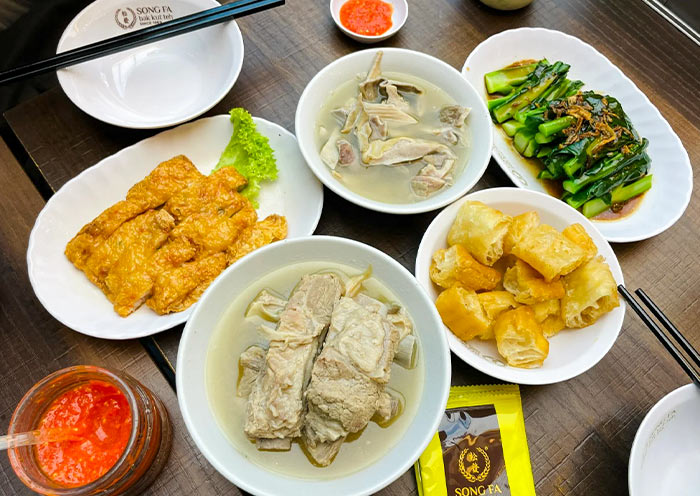
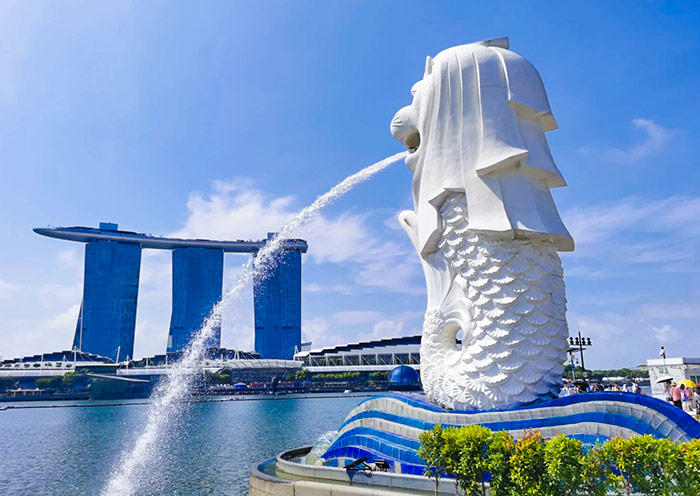

Discover Highlights of Singapore City. Wander through colorful Kampong Glam (Muslim Culture), rich in Malay & Arab heritage. At Merlion Park, capture iconic waterfront views of the Lion City. Admire the intricate architecture of Thian Hock Keng Temple (Taoist Culture), the place to worship Mazu, the Chinese sea goddess. Visiting Singapore Botanic Gardens, a green sanctuary/lung in the heart of Singapore’s urban landscape.
First, head to Kampong Glam, a good place to explore Muslim & Malay Culture. As one of the oldest street in Singapore, this area used to be the center of activities for the Malay Royal Family, and it retains many historical buildings and cultural attractions such as the Sultan Mosque, Arab Street and Haji Lane.
Kampong Glam was a seaside village 200 years ago. In Malay "Kampong" means 'village,' the village was named for the gelam trees that once grew there, used for shipbuilding and medicine. During Singapore's colonial era, Sir Stamford Raffles designated it for Malay, Arab, and Bugis communities in 1822. Today, its 19 th-century shophouses host textile shops and diverse restaurants.
The Sultan Mosque is the landmark of Kampong Glam due to its huge golden dome and towering minaret. Its architectural style is a fusion of Malay, Indian and Mughal styles, epitomizing Singapore's multiculturalism. Sultan Mosque was built in 1824 by Sultan Hussein Shah, the Sultan of Johor. In 1819, Sultan Hussein Shah's agreement with the British was a key event in the founding of modern Singapore. As part of the agreement, Sultan Hussein Shah was recognized as the First Sultan of Singapore, and the area of Kampong Glam was allocated to him and his followers. Now, the Sultan Mosque can accommodate up to 5,000 believers for worship at the same time. (Note: To enter the mosque, wear long pants and sleeves out of respect).
When visiting Kampong Glam you should not miss a visit to Haji Lane to check out the murals by local artists such as Yip Yew Chong (叶耀宗). Haji Lane is famous for its striking murals and graffiti, making it a photographer's paradise. It's packed with independent shops selling trendy fashion, vintage items, and quirky souvenirs. It's a hub for hip cafes and bars, perfect for relaxing and people-watching.
After that, you will pay a visit to Merlion Park by driving past Civic District, the historic heart of Singapore. You can view important landmarks (colonial era buildings) from your car such as the Padang, a historic field hosting national events, the elegant Singapore Cricket Club (Founded in 1852), the colonial-era Parliament House (Completed in 1827), and the stunning National Gallery Singapore.
You will have a quick stop at Merlion Park for the Merlion Statue. It is a National Symbol of Singapore that finished in 1972. The Merlion combines a lion's head and fish body, representing Singapore's 'Lion City' name and fishing village history. According to myth, a brave prince saw a lion on the island and named it Singapura, blending strength and maritime heritage. As the smallest park in Singapore, Merlion Park is the perfect spot for photoing the Merlion Statue (8.6 meter’s Height) at a close distance and viewing the Marina Bay Sands and CBD of Singapore from afar.
Then transfer to explore Thian Hock Keng, Singapore's oldest Hokkien temple and a symbol of local Taoist culture. Thian Hock Keng, built-in 1840 by early Hokkien immigrants, is dedicated to Mazu (妈祖), who protected early Chinese immigrants during their perilous sea journeys. Located in Chinatown, it is a masterpiece of traditional Southern Chinese Architecture. You can marvel at its intricate carvings, nail-less construction, colorful tile, ancestral worship traditions, and peaceful ambiance.
At Last, head to Singapore Botanic Gardens. Established in 1859, it has transformed from a British colonial-era tropical garden into a modern, world-class scientific institution focused on conservation and education. The gardens attract plant enthusiasts who come to explore tropical plants and orchids, birders hoping to spot species like the Oriental Pied Hornbill, Buffy Fish-Owl, and Stork-billed Kingfisher, as well as wildlife enthusiasts eager to encounter otters, monitor lizards, plantain squirrels, geckos... Locals frequent the gardens for jogging, picnicking, or attending concerts at its Symphony Lake.
Did you know that the Singapore Botanic Gardens played a pivotal role in the rubber industry, contributing to its recognition as the only World Heritage Site in Singapore? In 1877, the Gardens introduced the rubber tree to Singapore from Brazil via the Royal Botanic Gardens in the UK. This breakthrough led to the successful cultivation of rubber across Southeast Asia (Malaysia, Indonesia, Thailand), transforming the region into a global hub for rubber production. Its contributions to rubber cultivation, along with its rich tropical rainforest plant collection, stunning garden design, unique architecture, and cultural history, earned it UNESCO World Cultural Heritage status in 2015.
You won’t miss the crown jewel of the Singapore Botanic Gardens - the National Orchid Garden! Step into a world of color and beauty, home to over 1,000 orchid species and stunning hybrids. This is the ultimate spot to admire the Vanda Miss Joaquim (卓锦万代兰), the beloved National Flower of Singapore, and marvel at orchids named after global icons like Lee Kuan Yew (李光耀), Jackie Chan (成龙), Princess Diana, Michelle Obama, and Singapore’s very own songbird,Stefanie Sun (孙燕姿).
Travel Tips:
1.The iconic 150-year-old Tembusu tree, featured on Singapore's $5 note, is located within the Singapore Botanic Gardens. Specifically, it's found not far from the Tanglin Gate entrance.
2.The Singapore Botanic Gardens is a great spot to see Singapore's National Bird, the Crimson Sunbird. The small size and agility bird feeds on nectar and is often found among flowers in forested areas.
Free Time Ideas:
1.Take a ride on the Singapore Flyer (8:30 am to 10:30 pm; Self-pay) for panoramic city views in the night.
2.Explore Orchard Road, Singapore's famous shopping street.




Welcome to Hanoi, the capital city of Vietnam!
Upon arrival at Noi Bai International Airport, you will be met by our local guide and driver. Then, we will take you to your carefully selected hotel in Hanoi. We will assist you with check-in. The rest of today is free for you to explore this old and charming city at your own pace.
Hanoi, located in northern Vietnam, boasts a rich history dating back over 1,000 years. It showcases a blend of Vietnamese, Chinese, and French influences. Renowned for its diverse culinary scene, Hanoi is considered a food lover's paradise to taste Vietnamese cuisine. The city is famous for its street food, where you can savor an array of local specialties.
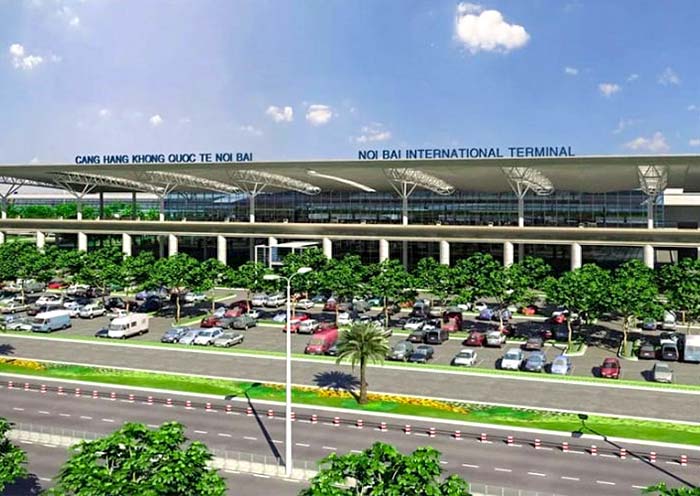
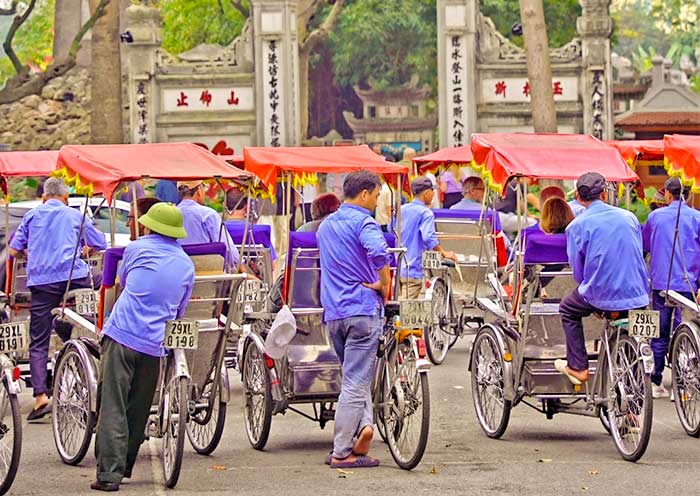
After breakfast, your guide will pick you up at your hotel for a delightful day exploring Hanoi City. This city holds a unique charm despite not being the most modern. Its character lies in the captivating blend of Vietnamese, Chinese, and French influences, all woven together with the city's authentic and bustling local life within its old alleyways. Indulge in the delicious local street food for a taste of true Vietnamese flavors.
Our first stop is a tranquil escape to Tran Quoc Pagoda, nestled amidst the picturesque West Lake. It is the oldest Buddhist temple in Hanoi, with a history dating back over 1500 years. As you approach, you'll be greeted by the sight of the iconic 11-story lotus tower, a symbol of the pagoda. Step inside the main hall and explore its beauty, where intricate carvings and frescoes adorn the walls. Be sure to admire the serene lotus pond, adding to the pagoda's peaceful atmosphere.
Later, head to the Ho Chi Minh Mausoleum, situated in Ba Dinh Square. The mausoleum serves as the final resting place of Ho Chi Minh (Uncle Ho), the revered leader of Vietnamese independence and the founding father of modern Vietnam. Dress respectfully and visit the mausoleum to pay homage to this iconic figure and learn about his immense role in shaping the nation. If you're lucky, you might witness the solemn and precise military honor guard ceremony. (Note: 1. The Mausoleum closes from Sep. 4 to Nov. 4 every year. 2. The surrounding sites include the Presidential Palace, Ho Chi Minh's Stilt House, and the Ho Chi Minh Museum.)
Afterward, enjoy a short walk to visit the One Pillar Pagoda. Prepare to be amazed by its distinctive shape: the main building sits atop a single stone pillar, resembling a lotus flower blossoming from a pond. Legend has it that Emperor Ly Thai Tong dreamt of receiving a son from the Buddhist goddess of mercy, Quan Am Bo Tat, on a lotus flower. The pagoda's construction served as a way to express his gratitude. Later, visit the Temple of Literature, Vietnam's first university and a site dedicated to Confucianism.
This afternoon, delve into Vietnam's fascinating history at the Vietnam National Museum of History. Here, you'll gain a comprehensive understanding of Vietnam's past, from prehistoric times to the 20th century, through a captivating display of artifacts. Witness ancient bronze drums, intricate ceramics, and powerful imperial regalia, each piece whispering stories of Vietnam's remarkable evolution.
Later, head to Hoan Kiem Lake, also known as Lake of the Restored Sword, a shimmering jewel in the heart of Hanoi. Take a leisurely stroll along the lake's perimeter, enjoying a view of the iconic Turtle Tower. Legend tells the tale of Emperor Le Loi returning a magical sword to a giant turtle residing in the lake, thus giving rise to the name "Lake of the Returned Sword." Afterwards, visit Ngoc Son Temple, dedicated to various Vietnamese historical figures and the revered Confucian scholar Van Xuong.
Afterward, immerse yourself in the local life of Vietnam with a unique and fun cyclo tour! For about an hour, you'll travel at a slow and leisurely pace through the iconic Old Quarter of Hanoi. A cyclo, a traditional three-wheeled bicycle taxi, will be your chariot for exploring the narrow streets. Cruise through the famed 36 Streets (each named after a specific trade) and pass by iconic landmarks like Dong Xuan Market, St. Joseph's Cathedral, and the Hanoi Opera House. This is a fantastic way to experience the Old Quarter's charming and vibrant atmosphere firsthand! Don't miss the chance to savor the delicious variety of Vietnamese street food and local dishes!
Optional Water Puppet Show: Immerse yourself in a unique Vietnamese tradition by catching a water puppet show in the late afternoon or evening! Dating back to the 11th century, these captivating performances use colorful puppets manipulated on a water stage to depict folktales and historical events. A highly-recommended venue for this experience is the Thang Long Water Puppet Theatre.
After the tour, be escorted to your hotel in Hanoi.
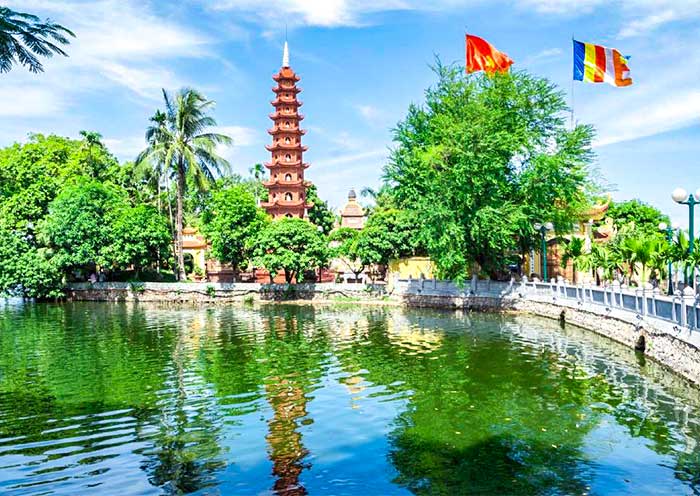


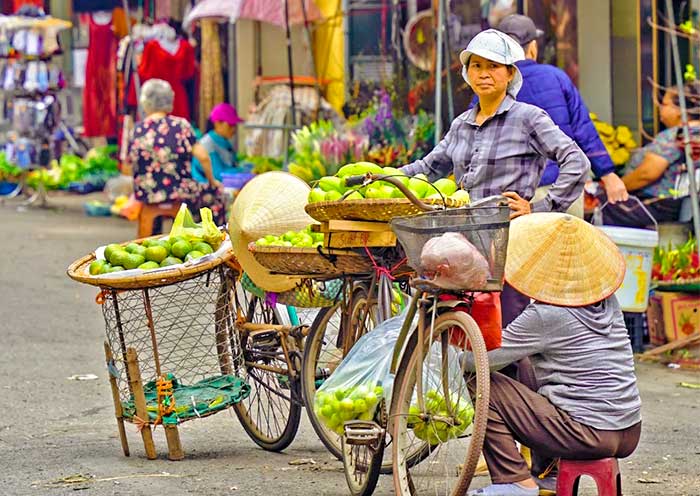
Halong Bay, A UNESCO World Heritage Site, boasts thousands of majestic limestone formations, sculpted by nature over millions of years. Reputed as “Guilin on the Sea”, these emerald islands rise dramatically from crystal-clear turquoise waters, creating a breathtaking seascape. Thanks to its dramatic cliffs, shimmering turquoise waters, and over 1,600 limestone islands and islets, Halong Bay is one of the most popular destinations in northern Vietnam. A cruise offers the best way to experience its unparalleled beauty.
Morning:
This morning, between 8:00 AM and 8:30 AM, the cruise company's shuttle bus will pick you up in Hanoi's Old Quarter area. Hop aboard and prepare to be whisked away on a scenic 2.5-hour drive (147 km) to stunning Halong Bay!
Upon arrival, you'll be warmly welcomed aboard with a refreshing drink. Following a quick safety briefing from the cruise manager, you can relax and savor a delicious lunch onboard.
Afternoon:
This afternoon, you’ll explore Halong Bay's dramatic karst landscape with your cruise! Different cruise companies offer various itineraries, but you might visit some of these fascinating spots and try water activities like kayaking, swimming, etc. Watch the sunset paint the karst mountains with colors.
- Sung Sot Cave (Surprise Cave): Discover a magnificent cave adorned with stalactites and stalagmites.
- Titop Island: Hike to the peak for breathtaking panoramic views of the bay.
- Cua Van Fishing Village: Witness the traditional way of life of local fishermen in a floating village.
- Tung Sau Pearl Farm: Learn about pearl cultivation and see these beautiful gems firsthand.
- Trinh Nu Cave (Virgin Cave): Discover a secluded cave with a unique rock formation.
Evening
This evening, indulge in a hearty dinner prepared by our talented chefs in the elegant dining room. After dinner, unwind with a variety of leisure options: join in on board games, try your hand at squid fishing, catch a night movie, or head to the bars & karaoke. Overnight onboard.
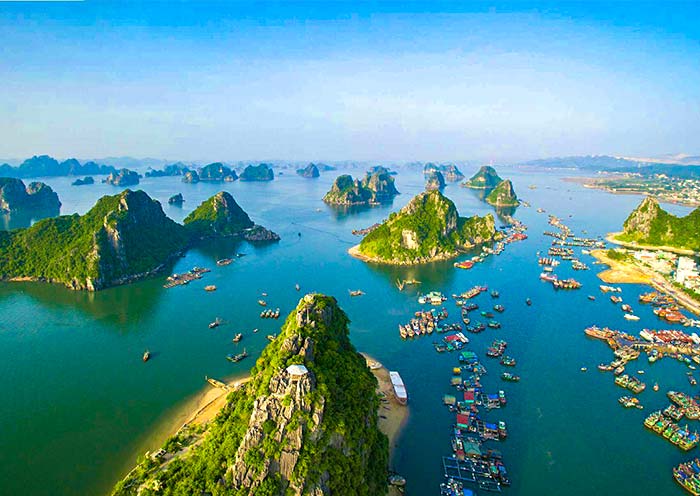
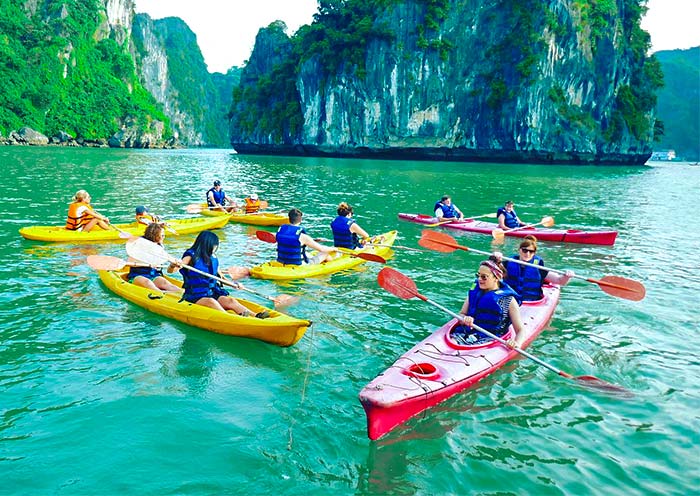
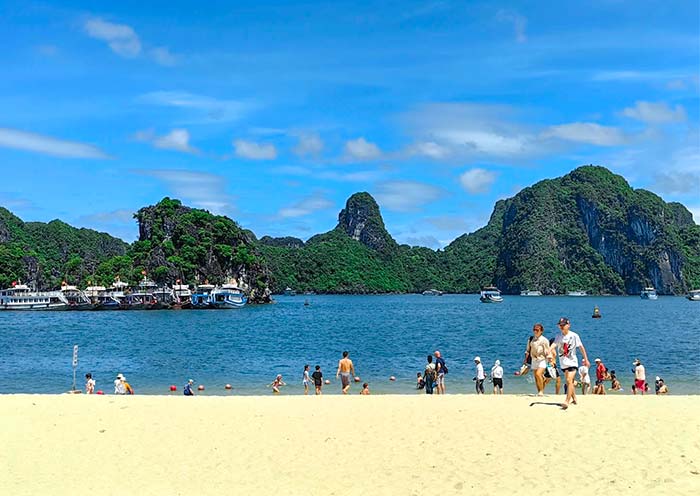
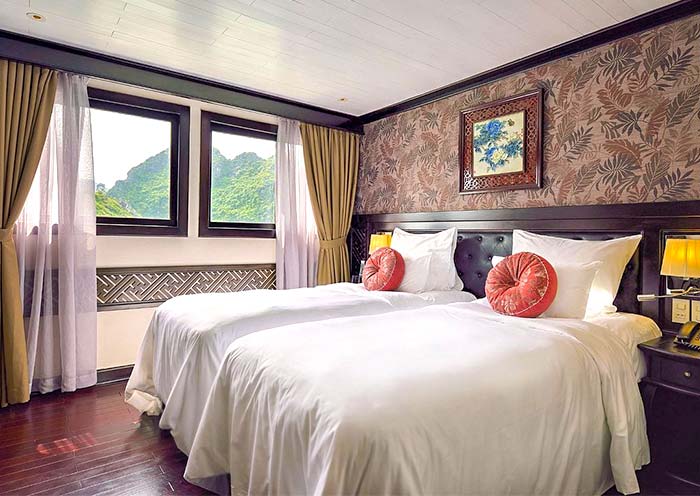
Early risers can embrace the sunrise with a Tai Chi class on the sundeck, invigorating your body and mind. Enjoy a delicious breakfast to onboard.
After breakfast, continue your exploration of Halong Bay! You can choose to participate in exciting water activities like kayaking or follow the cruise itinerary to admire the majestic limestone formations.
Later this morning, return to the cruise for a smooth check-out process at the reception. As you cruise back to the pier, savor a delightful lunch at 10:00 AM. Disembarkation will take place between 11:00 AM and 11:30 AM.
Following disembarkation, you'll be transferred back to Hanoi. Meet your driver and head to the airport for your flight to Da Nang (about 1h 20m).
Upon arrival in Da Nang, you'll be met by your tour guide and whisked away for a scenic 1-hour drive to Hoi An. Welcome to Hoi An, a UNESCO World Heritage Site famed for its enchanting Hoi An Ancient Town! This charming town boasts a unique blend of architectural styles, reflecting Vietnamese, Chinese, Japanese, and European influences. Your guide will then take you to your hotel in Hoi An for check-in. The rest of the day is yours to explore at your own pace!
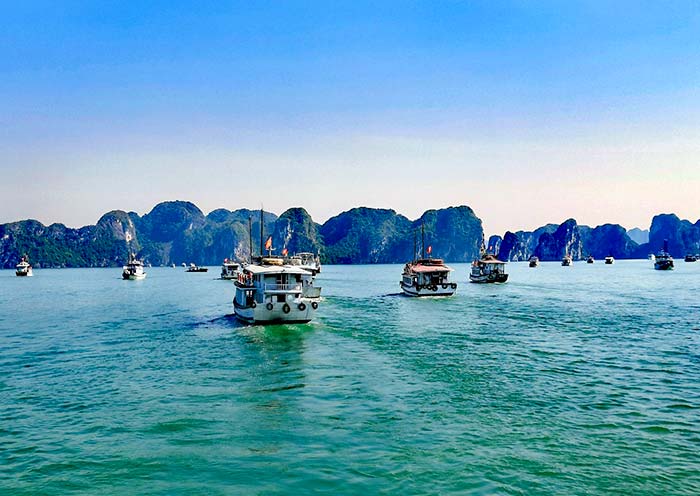
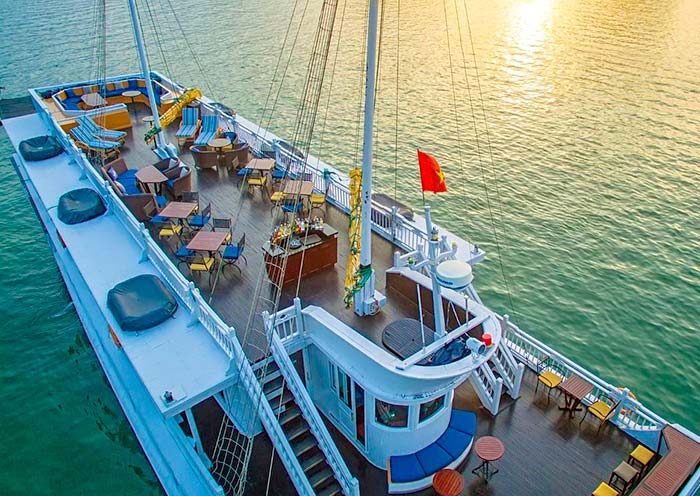
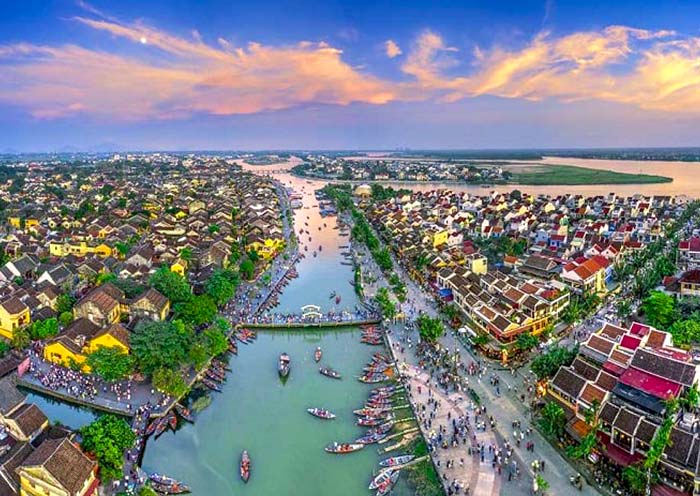

After breakfast, your tour guide will pick you up at your hotel for a half-day excursion to Cam Thanh village, a charming fishing village nestled amidst the Cam Thanh Water Coconut Forest.
The basket boat's history can be traced back over 2,000 years to the Cham people who settled in this area. Originally designed for fishing in shallow waters, these unique Vietnamese watercraft are still used today.
Upon arrival, prepare to take an exciting 45-minute to 1-hour adventure on a traditional basket boat. Crafted from bamboo and woven palm leaves, these boats will take you on a journey through the heart of the verdant coconut palm forest. As you glide through the serene waterways, surrounded by lush coconut groves and vibrant rice paddies, soak in the peaceful atmosphere. Witness the unique ecosystem teeming with diverse flora and fauna. Learn about the local community's commendable efforts in preserving this remarkable environment.
Other activities and experiences include:
- Dance with the locals in the basket boat;
- Try your hand at casting traditional nets and basket traps;
- Catch crabs or snails by the riverbank.
After your exciting excursion to Cam Thanh village, you'll return to Hoi An where you can savor a delicious lunch of authentic Vietnamese cuisine. This afternoon, enjoy a captivating exploration of Hoi An Ancient Town with your knowledgeable guide.
Hoi An Ancient Town, a UNESCO World Heritage Site, is an exceptionally well-preserved example of a Southeast Asian trading port dating from the 15th to the 19th centuries. The complex boasts 1,107 timber-frame buildings. It represents a fusion of indigenous and foreign cultures (principally Chinese and Japanese, with later European influences) that combined to produce this unique, well-preserved town. Walking through Hoi An is like stepping back in time. Our guide will lead you to some of the town's most significant landmarks, including the iconic Japanese Covered Bridge, the ornate Fujian Assembly Hall, and the historic Tan Ky House (Old House of Tan Ky). After, explore the bustling Hoi An market and delve into some of the delicious local offerings, like Cao Lau (Pork Rice Noodles), Com Ga (Chicken Rice), Banh Mi (Vietnamese Baguette), White Rose Dumplings (Banh Bao Vac), and Mi Quang (Turmeric Noodle Soup).
Optional Night Time Ideas in Hoi An Ancient Town:
- As dusk falls, the town comes alive with soft glow of lanterns. Take a leisurely stroll through the narrow alleys and admire the vibrant colors and intricate designs.
- Enjoy a relaxing boat ride on the Thu Bon River as you take in the illuminated riverside and the Japanese Covered Bridge.
- Explore the bustling Hoi An Night Market, where you can find a plethora of local specialties and souvenirs.
After the tour, you’ll be transferred back to the hotel, and then you can have the rest of the day to yourself.


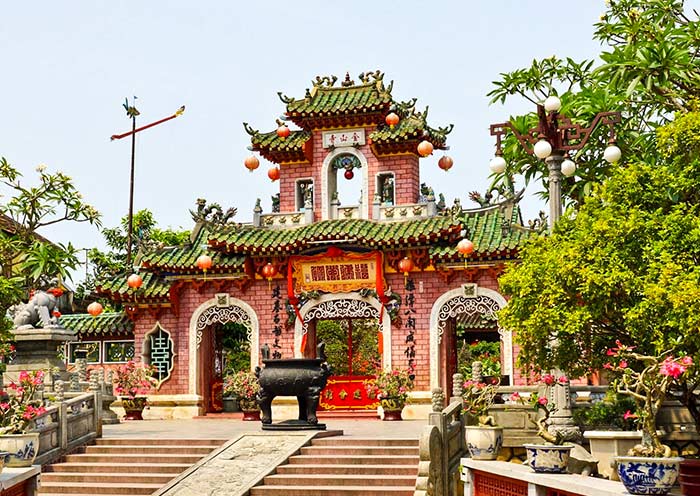

This morning, you will be transferred from Hoi An to Da Nang for a flight to Ho Chi Minh City (about 1.5 hours). Welcome to Ho Chi Minh City! Formerly known as Saigon, Ho Chi Minh City is the largest city in Vietnam. Located in southern Vietnam, it's a well-blended mix of historical significance and modern dynamism.
Upon arrival at Tan Son Nhat International Airport in Ho Chi Minh City (approximately 6.5km from downtown), your local guide will meet you and escort you to your hotel. In the afternoon, you'll take a half-day tour exploring Ho Chi Minh City's rich history, culture, and vibrant modern life.
Our first stop is the Reunification Palace, also called the Independence Palace, a captivating architectural marvel that once served as the residence of the South Vietnamese President. Here, you can witness the iconic image of North Vietnamese tanks storming the palace gates, a defining moment that marked the end of the Vietnam War in 1975. Next, we head to the War Remnants Museum, a poignant and powerful testament to the realities of the Vietnam War. Prepare to be moved by exhibits showcasing artifacts, photographs, and weaponry that tell stories of war and resilience.
Next on your itinerary is Nha Tho Tan Dinh, also known as the Pink Church. This vibrant landmark stands out with its unique hue, making it instantly recognizable and a popular spot to capture stunning photos. Step back in time as you learn that Nha Tho Tan Dinh was built in the late 19th century, making it one of the oldest churches in Ho Chi Minh City. Admire the fascinating blend of Romanesque and Gothic styles in its architecture, with two grand bell towers flanking the entrance. Snap some cool pictures outside to remember your visit!
Then, be transported back in time at the Central Post Office, a majestic building constructed in the early 20th century. Take a moment to appreciate the impressive facade with its wrought-iron details and colorful mosaic floors. (Optional Experience: To create a lasting memory of Vietnam, send postcards to your loved ones from this historic landmark.)
Later, experience Saigon's famed coffee culture by visiting the Coffee Apartment, and culminate your exciting day with a captivating immersion into the vibrant atmosphere of Ben Thanh Market. Explore a world of local crafts, and don't miss the chance to tantalize your taste buds with the incredible array of Vietnamese street food - a sensory explosion not to be missed!
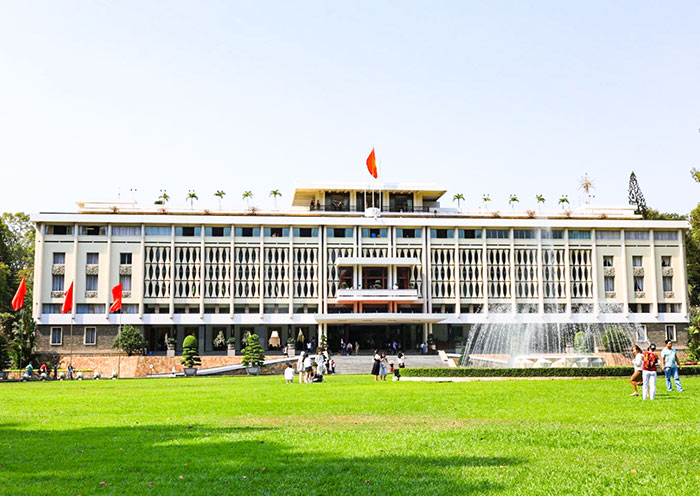


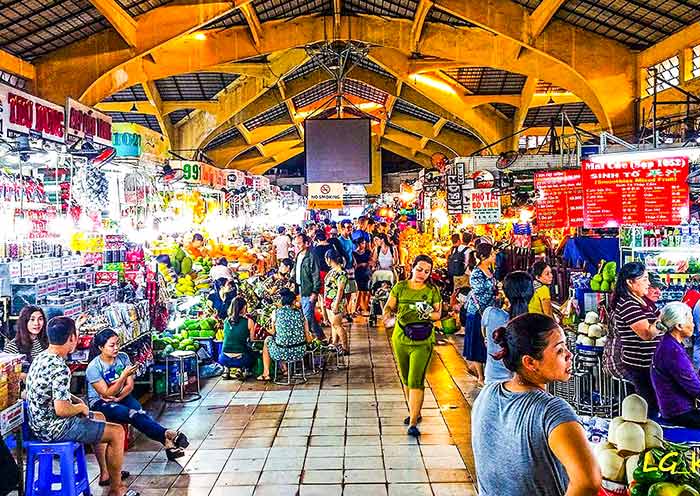
After breakfast, spend a full day exploring the Mekong Delta at a relaxing pace. Mekong Delta, located in southwestern Vietnam, is a vast maze of rivers, canals, islands, and rice paddies formed by the Mekong River as it empties into the sea. Known as the "rice bowl" of Vietnam, the Delta is a major agricultural hub, producing a significant portion of the country's rice and fish.
Start from Ho Chi Minh City, you will pass through green rice fields and small villages to arrive in beautiful rural My Tho. Upon arrival, your first stop is Vinh Trang Pagoda. Built in the mid-19th century, Vinh Trang is renowned for its stunning architecture, showcasing a harmonious fusion of Vietnamese, Chinese, and Khmer influences. You will be amazed by the outstanding architecture, meticulously carved columns with intricate details, and visits to the Statue of Maitreya Buddha, Statue of Amitabha Buddha, Reclining Buddha statue, and 7-story tower.
Later, head to the nearby pier to board a traditional Mekong Delta boat for a scenic cruise along the majestic river. As you explore, lush greenery and bustling river life will captivate you. Glide past the Turtle, Dragon, and Phoenix Islets, eventually arriving at the enchanting Unicorn Islet. And, delve deeper into the Delta's heart with a ride on a traditional sampan boat through narrow waterways lined with coconut palms. This intimate experience allows you to appreciate the unique ecosystem and the local way of life firsthand. Stop at a bee farm to savor honey tea, taste local fruits, and immerse yourself in traditional music performed by the villagers. Learn about their daily lives and gain a deeper understanding of the region's culture. Enjoy a local lunch with Vietnamese dishes.
After lunch, take a boat trip to Ben Tre, known as the coconut kingdom, a charming town famous for its coconut plantations and fruit orchards. Enjoy a leisurely bike ride through the countryside and learn about how coconut products are produced in the region. Visit a coconut candy workshop.
After the memorable tour, get back to Ho Chi Minh City.
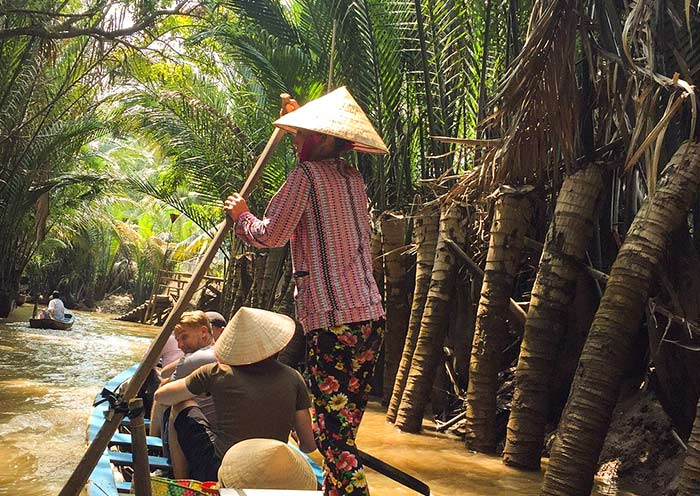
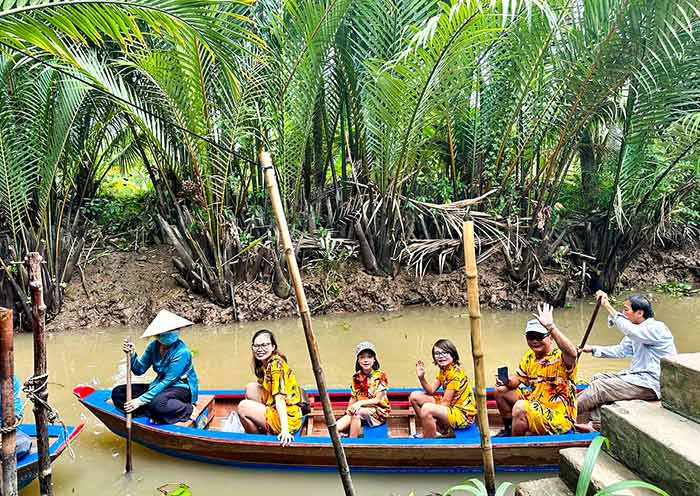


It is time to end your 10 Days Singapore Vietnam Tour. Today, you'll be escorted to Tan Son Nhat International Airport to catch a flight for your departure.
Trip Extension: If you plan to continue exploring Asia countries such as Singapore, Indonesia, Malaysia, Thailand, Laos, Vietnam, Cambodia, Philippines, Maldives, Sri Lanka, India, Nepal, Bhutan, China, Hong Kong, Taiwan, Japan, South Korea, don't hesitate to let us know. We can customize your itinerary and assist with travel arrangements.
Thank you for choosing Asia Odyssey Travel for your Asia tour, we are always here working for you and hope to see you again for your next trip to Asia. Safe journey!
Price: What’s Included & What’s Excluded
What's Included:
What's Excluded:
Important Travel Tips for Visiting Southeast Asia
Visa requirements vary depending on your nationality and the length of your stay. It's important to check the specific requirements for each country you plan to visit well in advance of your trip. You can usually find this information on the embassy or consulate website of the country you're visiting.
Dry season (November to April): This is the peak tourist season for Southeast Asia as a whole, with the most consistent sunshine and comfortable temperatures. Ideal for beach lovers and those who want to avoid the rain. This is also a great time for trekking and other outdoor activities.
Average temperatures during Dry Season in Southeast Asia:
- Vietnam: 77°F - 86°F (25°C - 30°C): It can be slightly cooler in the northern mountains during December and January.
- Thailand: 82°F - 90°F (28°C - 32°C): Eastern and southern Thailand, including popular beach destinations, tend to be a few degrees warmer than the north.
- Laos: 75°F - 88°F (24°C - 31°C): Keep in mind that the mountainous areas of Laos can get chilly at night, especially in December and January.
- Cambodia: 84°F - 93°F (29°C - 34°C): Temperatures can get quite hot, especially from March to May, in Siem Reap (Angkor Wat).
The currency varies from country to country. In Vietnam, the currency is the Vietnamese đồng (VND). In Thailand, it's the Thai baht (THB). In Laos, it's the Lao kip (LAK). And in Cambodia, it's the Cambodian riel (KHR). However, US dollars are widely accepted in most tourist areas.
- Dress modestly: When visiting temples, pagodas, or other religious sites, it's important to dress modestly and respectfully. This means covering your shoulders and knees.
- Removing shoes: In many temples, it is customary to remove your shoes before entering. Look for a pile of shoes at the entrance as a cue to do the same.
- Bargaining: Bargaining is a common practice in Southeast Asia countries’ markets and street stalls. However, it's important to do so respectfully and with a friendly attitude. Remember that the aim is to reach a mutually agreed-upon price, not to aggressively drive the price down.
Looking for more travel guides about Southeast Asia countries? Want to gather additional information to plan your trip? Our team of professional travel experts has written over 100 articles about Vietnam Thailand Cambodia Laos. Please check out our Southeast Asia Travel Guide for inspiration and detailed insights.
Hotel Conditions for Your Southeast Asia Tour
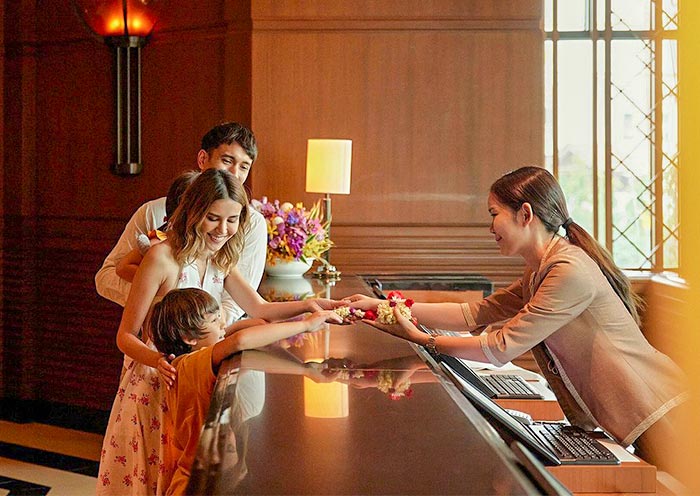


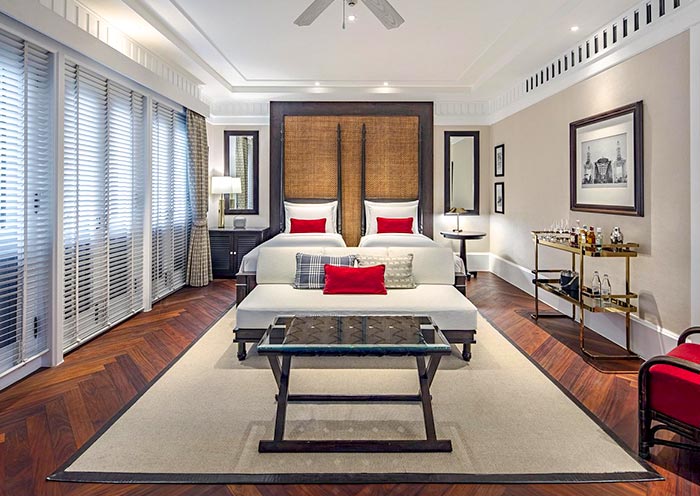
No matter whether you combine 2 or 3 countries, or visit all 4 countries in Southeast Asia, there are many different hotel styles and types to choose from. Travelers typically spend 7-9 nights in Vietnam, 6-9 nights in Thailand, and 2-3 nights each in Cambodia and Laos.
To cater to diverse traveler preferences and budgets, we offer a curated selection of accommodations. Our options include luxurious 5-star hotels, comfortable 4-star options, and economical 3-star establishments. All our selected hotels are conveniently located near city centers or popular tourist spots.
Find your perfect hotel for a great Southeast Asian experience! Our knowledgeable travel experts can provide you with various pricing options based on different hotels. Whether you seek a luxurious stay or have specific preferences, our experts will assist you in choosing the best option that suits your needs.
Photo Gallery for This Itinerary
Latest Southeast Asia Tours Reviews from Our Customers

Jan Woolley
USA
Date of Experience: Apr 26, 2024
Tour Customized by: Tony
You May be Interested in This Tour: Customized Tour

Emma
Singapore
Destination(s): Other
Date of Experience: Sep 14, 2023
Tour Customized by: Owen
You May be Interested in This Tour: Customized Tour

Arizona
Australia
Destination(s): Other
Date of Experience: Sep 04, 2023
Tour Customized by: Teresa
You May be Interested in This Tour: Customized Tour
Price: request
(Based on a private tour for two people. Price varies depending on program, travel date, number of people.)
Free Enquiry! You don’t need to pay for the reservation.
- United States (+1)
- Australia (+61)
- Singapore (+65)
- Malaysia (+60)
- Philippines (+63)
- Canada (+1)
- Italy (+39)
- Indonesia (+62)
- United Kingdom (+44)
- Spain (+34)
- Mexico (+52)
- Hong Kong (+852)
- Thailand (+66)
- United Arab Emirates (+971)
- New Zealand (+64)
- South Africa (+27)
- Germany (+49)
- Brazil (+55)
- India (+91)
- France (+33)
- Vietnam (+84)
- The Netherlands (+31)
- Saudi Arabia (+966)
- Ireland (+353)
- Argentina (+54)
- Switzerland (+41)
- Romania (+40)
- Pakistan (+92)
- Japan (+81)
- Portugal (+351)
- Bangladesh (+880)
- South Korea (+82)
- Puerto Rico (+1)
- Türkiye (+90)
- China (+86)
- Belgium (+32)
- Qatar (+974)
- Greece (+30)
- Taiwan (+886)
- Austria (+43)
- Poland (+48)
- Israel (+972)
- Chile (+56)
- Sri Lanka (+94)
- Nigeria (+234)
- Peru (+51)
- Colombia (+57)
- Hungary (+36)
- Nepal (+977)
- Denmark (+45)
- Bulgaria (+359)
- Norway (+47)
- Slovenia (+383)
- Sweden (+46)
- Kuwait (+965)
- Costa Rica (+506)
- Ecuador (+593)
- Venezuela (+58)
- Malta (+356)
- Croatia (+385)
- Tunisia (+216)
- Czechia (+420)
- Mongolia (+976)
- Bahrain (+973)
- Mauritius (+230)
- Papua New Guinea (+675)
- Cambodia (+855)
- Dominican Republic (+1)
- Luxembourg (+352)
- Finland (+358)
- Guatemala (+502)
- Myanmar (+95)
- Maldives (+960)
- Slovakia (+421)
- Laos (+856)
- Serbia (+381)
- Brunei (+673)
- Oman (+968)
- Macao (+853)
- Panama (+507)
- Morocco (+212)
- Jordan (+962)
- Georgia (+995)
- Fiji (+679)
- Bolivia (+591)
- Lithuania (+370)
- Bahamas (+1)
- Cyprus (+357)
- Latvia (+371)
- Bhutan (+975)
- Iraq (+964)
- Iran (+98)
- Kenya (+254)
- Jamaica (+1)
- Zimbabwe (+263)
- Azerbaijan (+994)
- Uruguay (+598)
- Estonia (+372)
- Andorra (+376)
- Cameroon (+237)
- Ghana (+233)
- Kazakhstan (+7)
- Nicaragua (+505)
- Egypt (+20)
- Russia (+7)
- Albania (+355)
- Réunion (+262)
- Montenegro (+382)
- Algeria (+213)
- Afghanistan (+93)
- Martinique (+596)
- Uganda (+256)
- Honduras (+504)
- North Macedonia (+389)
- Trinidad and Tobago (+1)
- Suriname (+597)
- Antigua and Barbuda (+1)
- Zambia (+260)
- Ukraine (+380)
- Armenia (+374)
- Barbados (+1)
- Belarus (+375)
- Palestine (+970)
- Lesotho (+266)
- Moldova (+373)
- Ethiopia (+251)
- French Polynesia (+689)
- Gambia (+220)
- Guam (+1)
- Gibraltar (+350)
- Isle of Man (+44)
- New Caledonia (+687)
- El Salvador (+503)
- Comoros (+269)
- Seychelles (+248)
- Chad (+235)
- Samoa (+685)
- Cook Islands (+682)
- Palau (+680)
- Paraguay (+595)
- DR Congo (+243)
- Solomon Islands (+677)
